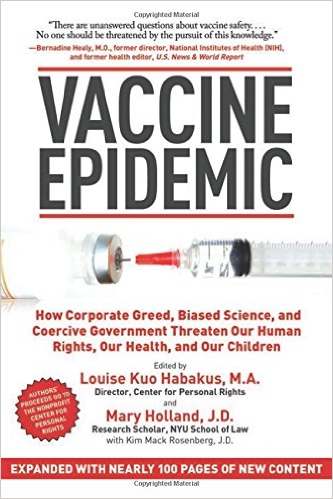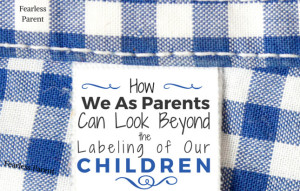Getting your kids’ annual school physicals this month? Have some nagging health concerns? As you jot down notes to discuss with the pediatrician, take this checklist with you.
There are straightforward, nutrition-focused solutions to the critical path issues on this list. No drugs, no therapy, no ongoing visits to behavior clinics. Simple measures may resolve these problems without drawn out drug trials or therapies that leave your family frustrated and exhausted.
If your pediatrician is stumped about how to use real food and nutrition tools, find other resources.
#1: Diarrhea is not a developmental phase
How often have I heard, “My doctor said it’s ‘toddler diarrhea’” or “Clostridia difficile is common in kids; it doesn’t need treatment” or “It’s okay because my kid is still growing” or “It can’t be avoided because he has FPIES.”
Yes, infants and toddlers have varying stool patterns, but there is usually a reason for it that can and should be fixed.
DIARRHEA IS A NUTRITION THIEF
Chronic diarrhea robs your child’s brain and body of critical nutrition. Teething, fevers, and stomach bugs can disrupt potty pattern for sure, but the operative word here is transient.
Funky poop should resolve back to a comfortable pattern within a few days or a two weeks at most. Expect a baseline pattern of formed (not hard, not dry) stools every day that are easy to pass.
Ongoing loose, explosive, mucousy, irritable, burning, or foul stool is not healthy, normal, or necessary to put up with. It is a sign that something is awry — food intolerances or allergies, background infections, reflux, or weak nutrition status to name a few.
The other clear sign for good digestion and nutrient absorption in kids is a steady growth pattern, with no flattening trend for weight, height, or body mass index.
IT IMPACTS POTTY TRAINING
Daily eliminations that are soft formed (or soft gold mush for breastfed babies) are a sign that your child is digesting and absorbing his food well. In ancient Ayurvedic medical traditions, fewer than three soft formed eliminations per day (one after each meal) is considered constipation.
Tired of diapers? Diarrhea interferes with independent toileting. It’s harder for kids to potty train, when they never know what’s coming!
IT CAN LOOK LIKE BEHAVIOR OR PSYCHIATRIC PROBLEMS
Kids who have chronic diarrhea often exhibit what can be misconstrued as–and fruitlessly treated as–behavior or psychiatric problems like anxiety, irritability, low motivation (fatigue), bad sleep patterns, or inattention.
Once digestion and stool pattern are supported, these problems fade too, as kids absorb nutrients and energy more reliably. Who wouldn’t feel better?
Long short – if you have a cranky little who can’t sleep well and who has a lot of loose messy stools, investigate. Don’t mask symptoms with long term drug dependence – fix the underlying problem.
Your child’s gut health can likely improve with non-drug, nutrition-focused measures… even with conditions like FPIES. And if your school aged child is struggling with chronic loose stools, fatigue, and poor energy, expect it to be better. If your pediatrician can’t help, and a gastroenterology referral was a dead end too, maybe it’s time to consider integrative nutrition.
#2: The key to fighting infections is nutrition
No, not vaccines. Nutrition status is the single most critical factor in the “greatest public health issue” influencing whether kids get sick, how often, for how long, and if they develop complications. When kids do get sick with serious bugs like flu or measles, well-nourished kids fare far better, with a less complicated, shorter course of illness, and full recovery.
FEED THE IMMUNE SYSTEM
For over seventy years, data have piled up to show what a huge impact nutrition has on the immune system – from your kids’ tissue stores of vitamin A, to total protein intake, growth status, iron or zinc status, inflammatory chemistry, and more!
You can help your kids stay well even as they are surrounded by sniffles and coughs at daycare or school, by setting them up with tip top gut health and food. Judicious use of supplements, probiotics, and herbs can work wonders too – just be sure to tailor these to what your child needs, not a one-size-fits-all approach.
It’s music to my ears, when parents I’ve worked with tell me, “We didn’t have any colds this whole winter!” It happens.
LOOK FOR SIGNS OF STRONG NUTRITION STATUS
It isn’t what supplements you’re taking, whether you’re vegan or Paleo, or even what food you give your kids. It’s a number of things that are classically measured in children to assess how healthy they really are.
These are not all included in a standard well check or school physical, but some may be added on if you ask your doctor.
Strong nutrition status is evident in:
- Solid growth pattern in your child’s expected channels for weight, height, and body mass index. Your child can be expected to proceed at percentiles achieved at birth, unless s/he had a special circumstance that needed support very early, such as low birth weight or premature birth; even this can be expected to improve some as your child grows. Though pediatricians generally won’t address growth regression until children fall way down the chart, drops of more than fifteen percentile points that persist for more than three months warrant investigation for cause.
- Mid range lab findings for serum iron and ferritin (not at high or low edge of the range); normal blood count; normal chemistry panel with serum protein, albumen and other findings in mid lab range.
- Infrequent illnesses with short duration and full recovery.
- Strong clinical signs for healthy hair, skin, teeth, and nails; no or few cavities in the child’s lifetime.
- Ability to play, sleep, learn, and eliminate comfortably.
#3: Your child may need iron, even if not anemic
It’s common at annual physicals to check hemoglobin and hematocrit for kids, which is done with a finger stick blood test. These are two tests to check if your child is anemic.
The problem with this is that these are low sensitivity tests that don’t pick up pre-anemia.
Pre-anemia is a thing! It is a state in which iron stores are depleted, but hemoglobin and hematocrit are still in the normal range. These kids need iron support, and depending on diet, food intake and other factors, the fix may be just the right food, or may require the right iron supplement (there are several) or even an iron prescription.
PRE-ANEMIA SYMPTOMS MAY SURPRISE YOU
Kids in pre-anemia will have any of these features:
- shiners under eyes, pallor
- more frequent infections and colds; may take longer to recover
- irritable; crabby one minute, happy the next
- hyperactivity with fatigue – “crash and burn” pattern
- math may be most difficult subject (iron is related to math learning!)
- difficult sleep pattern, insomnia, can’t settle to sleep or sleep through
- picky or weak appetite; may want to chew non food items
- in girls in puberty, menstrual flow may be heavy, fatiguing, and/or with clots
Since iron can also be poisonous, don’t give iron supplements without guidance. Request thorough testing to find out if your child needs iron, vitamin B12, protein, or just the right food to correct anemia. I can help you with this as well, by finding an easy to tolerate iron supplement or B12 protocol, as well as how to work in replenishing foods.
#4: An allergist won’t find all food reactions
Allergists check for one thing — allergies.
They look for reactions by checking Immunoglobulin E (IgE) responses to foods or other substances. They may measure histamine and tryptase levels, too, among other things relating to those swift and dangerous reactions that have you grabbing the Epi Pen.
HOW ABOUT FOOD INTOLERANCES AND SENSITIVITIES?
But there are many other types of reactions to foods that disrupt stools, skin, behavior, and functioning. If allergy testing was negative for your child, but there are frequent colds or congestion, asthma, eczema, messy irritable stools, weak picky eating, or other nebulous symptoms, it’s time to assess more deeply.
Identifying these can make life a whole lot better for kids struggling with multiple symptoms – but, be prepared to go out of network and possibly pay out of pocket for these tests.
While insurance coverage for food allergy testing is common, it is not common for testing for food sensitivity reactions, or other immune responses to foods. Depending on your insurance and your child’s nutrition diagnosis, it may or may not be covered. I guide parents with this testing, can authorize it if your doctor does not know how, and interpret findings to build a nourishing diet for your kids.
#5: Nutrition can mitigate ADHD without meds
Big topic.
Pediatricians are trained to offer behavior therapy as a first line intervention for young children with ADHD. If that doesn’t work, their next recommendation is for medication with behavior therapy.
But what they don’t learn is how to help children achieve functional focus with nutrition, gut health, and food. So much can be done!
Stimulant medications have many drawbacks and side effects. Check out my site for posts on nutrition and ADHD – there is ample to mine there. You can also view this free lecture on nutrition and ADHD.
Per FDA guidelines, children as young as three years old can be given stimulant medication. This is not without costs to your child’s health and well being; suicidality may increase in older kids given these medications. It may seem like an easy quick fix, but there are other options. Help your child eat and absorb the nutrients his brain needs to focus. Take out the toxins, inflammation, and noise in the body.
You may be amazed at the difference nutrition care can make.
Why doesn’t my doctor practice nutrition?
Pediatricians don’t have a lot of time when they meet with you for a school physical or well check. And insurance companies tightly control what topics can be addressed in those visits, how long the visit can take, and how much a doctor is paid for that service.
When pediatricians wander from the format, they essentially won’t get paid for their time. And, they need to have a high volume practice to make money – meaning even less time to listen to you, educate you on meals and nutrition, or research new topics on their own.
Further discouraging nutrition in pediatrics is that drugs are much more profitable.
Drug companies now wield heavy influence over pediatric care, from the time a doctor begins medical training to every week in practice, when drug company sales reps visit with samples, glossy brochures, pens, free lunches, treats, or incentives to write prescriptions. It’s irresistible and easy.
There is no such format for nutrition intervention for complex problems. Last but not least, pediatricians are not required to complete much training in nutrition. They simply may not know what to do.
© 2017 Fearless Parent
The entirety of this post is copyright protected. Please obtain prior written permission with details for partial use and link back for attribution if you wish to share. Thank you.
A version of this post originally appeared on NutritionCare.net.
 Judy Converse, MPH, RD, LD has been practicing integrative nutrition for infants, children, and teens since 1999. She is a licensed registered dietitian with master’s and undergraduate degrees in nutrition. She has authored three books and is a contributing author of the bestselling book Vaccine Epidemic. Judy lectures widely on nutrition supports for children with autism and other special needs. Join her at NutritionCare.net where you will find her blog, twitter, newsletter.
Judy Converse, MPH, RD, LD has been practicing integrative nutrition for infants, children, and teens since 1999. She is a licensed registered dietitian with master’s and undergraduate degrees in nutrition. She has authored three books and is a contributing author of the bestselling book Vaccine Epidemic. Judy lectures widely on nutrition supports for children with autism and other special needs. Join her at NutritionCare.net where you will find her blog, twitter, newsletter.
Photo credit: Children’s Primary Care Medical Group













August 7, 2017 3:43 pm
Comments 0